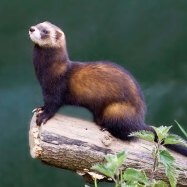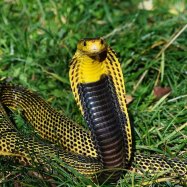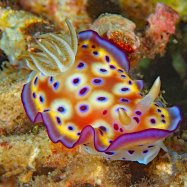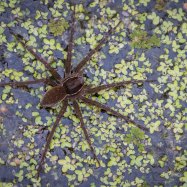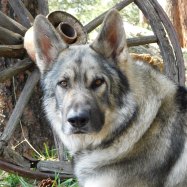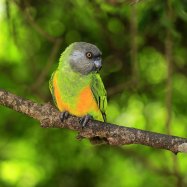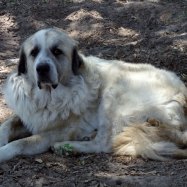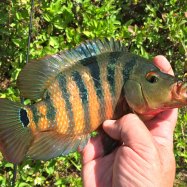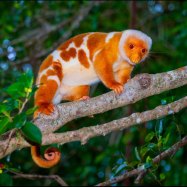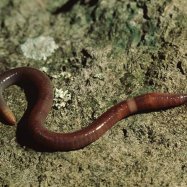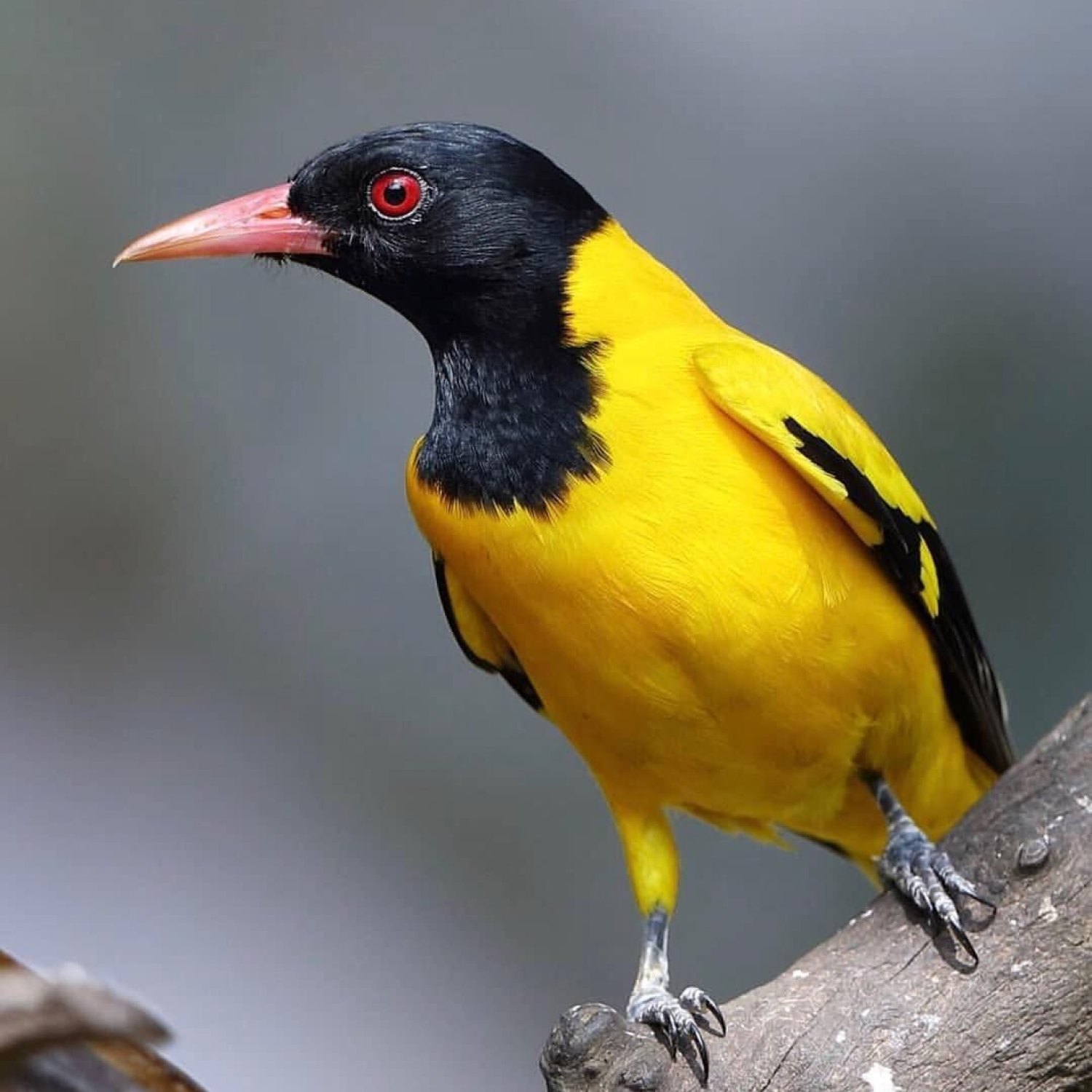
Hooded Oriole
7.5 to 8 inches
The Hooded Oriole is a small, colorful bird found in western North America and the Baja California Peninsula. With a slender body and a distinctive long, curved beak, these birds are a treat to watch. Keep an eye out for them in your backyard, as they are often seen feasting on nectar from flowers. #HoodedOriole #birdwatching #naturelovers
Animal Details Summary:
Common Name: Hooded Oriole
Kingdom: Animalia
Habitat: Open woodlands, groves, gardens
The Mesmerizing Hooded Oriole: A Vibrant Icon of Western North America
Nature never ceases to amaze us with its diverse and strikingly beautiful creations. One such marvel is the graceful and colorful Hooded Oriole (Icterus cucullatus). This small, slender bird with its bright yellow and black plumage is a charming and lively addition to the open woodlands and gardens of western North America and Mexico.The Hooded Oriole belongs to the animal kingdom, specifically the class Aves, and the order Passeriformes Hooded Oriole. It is a member of the Icteridae family, which includes blackbirds, grackles, and meadowlarks. This vibrant bird can be easily identified by its bright yellow head and body, contrasted by its black wings and tail. The unique feature of its hooded appearance has given it the name 'Hooded Oriole.'
This stunning bird prefers to reside in open woodlands, groves, and gardens. It is found in the western United States and Mexico, and its geographical distribution includes places like Baja California Peninsula, Nevada, Arizona, Texas, and parts of Central Mexico. The Hooded Oriole is a summer resident in the United States and migrates to Mexico during winter.
The Habitat and Adaptations of Hooded Oriole
The Hooded Oriole is well adapted to its habitat of open woodlands, groves, and gardens. Its slender and small body shape, measuring 7.5 to 8 inches in length, allows it to maneuver through tree branches and capture its prey with ease Harlequin Coral Snake. This bird has a long, slightly curved beak, which is perfect for reaching nectar from flowers, probing insects from crevices, and piercing fruits.The bright yellow coloration of the Hooded Oriole acts as camouflage in its natural habitat, providing cover and protection from predators. The black wings and tail make for a striking display during flight and are also helpful in attracting mates during the breeding season. This combination of colors is further accentuated by a black patch around its eyes, giving it the appearance of wearing a hood.
The Hooded Oriole's omnivorous feeding method makes it a versatile and adaptable species. It predominantly feeds on insects, nectar from flowers, and fruits. Its long, slender beak is specialized for reaching deep into flowers to obtain nectar, making it an efficient pollinator. It also uses this beak to catch insects and spiders hiding in the crevices of trees and plants.
During the winter months, when insects are scarce, Hooded Orioles switch to a mostly fruit-based diet. They are known to feed on berries, figs, and other seasonal fruits. This adaptability to different food sources is an essential survival trait for the Hooded Oriole.
The Behavior and Social Habits of Hooded Oriole
The Hooded Oriole is a relatively social bird that can be found in small groups or pairs. These birds are known to have complex social structures, with dominant males exerting their authority over other males in their group. These dominant males often have larger territories and more access to females during mating season.One of the most fascinating behaviors of the Hooded Oriole is its elaborate courtship rituals. The males of this species are known for their intricate and vocal displays to attract females. They can be seen flapping their wings and swaying their bodies, while producing a variety of songs and calls, making for a beautiful sight.
The breeding season for Hooded Orioles begins in late spring, usually around May. The nests are intricate and elaborate structures, hanging from the tips of palm fronds, willow branches, or other types of vegetation. The females are primarily responsible for building the nest, which takes an average of 3 weeks to complete. The males often assist in gathering nesting materials, such as grass, twigs, and feathers.
Once the nest is completed, the female lays a clutch of 3-5 eggs, which are then incubated for about 12 to 14 days. After hatching, the chicks are fed by both parents until they fledge and leave the nest after approximately two weeks. The nests of Hooded Orioles are sometimes targeted by predators, such as snakes, squirrels, and birds of prey, but the protective efforts of the parents and their social groups often ensure the safety of the chicks.
Conservation and Interaction with Humans
The Hooded Oriole, although abundant in some areas, has faced a decline in population in recent years due to habitat loss. Urbanization, agricultural activities, and deforestation have reduced the availability of suitable habitats for these birds, leading to a decline in their population. In addition, changes in climate have also affected their breeding and migration patterns.However, efforts are being made to conserve the Hooded Oriole by creating protected habitats and implementing strict regulations on the use of pesticides. The construction of artificial nesting sites has also proven to be a successful conservation strategy, with many birds choosing these man-made structures for their breeding.
The interaction between humans and Hooded Orioles is generally positive, with these birds being a much-loved addition to gardens and parks. Many people also enjoy attracting these birds by putting up bird feeders filled with sugar water for them to enjoy. However, it is crucial to maintain a safe distance and not disturb the birds while they are nesting, as any disturbance can lead to abandonment of their nests.
The Beauty and Significance of Hooded Oriole
The Hooded Oriole is more than just a beautiful bird; it holds cultural significance for many indigenous groups in Mexico and the southwestern United States. The Aztec and Hopi tribes consider the Hooded Oriole to be a symbol of courage and optimism, often depicted in their art and mythology.Apart from its cultural and aesthetic value, the significance of the Hooded Oriole goes beyond its appearance. As a pollinator, it plays a crucial role in the reproduction of various plants and trees, ensuring the balance and sustainability of its ecosystem. It also contributes to pest control by feeding on insects, making it a valuable species to have in gardens and farms.
In conclusion, the Hooded Oriole is a marvelous creation of nature, with its bright coloration, unique adaptations, and interesting behaviors. Its presence in gardens and open woodlands is a reminder of the beauty and diversity of our natural world. By learning more about these vibrant birds and their importance, we can appreciate and protect them for generations to come.

Hooded Oriole
Animal Details Hooded Oriole - Scientific Name: Icterus cucullatus
- Category: Animals H
- Scientific Name: Icterus cucullatus
- Common Name: Hooded Oriole
- Kingdom: Animalia
- Phylum: Chordata
- Class: Aves
- Order: Passeriformes
- Family: Icteridae
- Habitat: Open woodlands, groves, gardens
- Feeding Method: Omnivorous
- Geographical Distribution: Western United States and Mexico
- Country of Origin: United States and Mexico
- Location: Western North America and Baja California Peninsula
- Animal Coloration: Bright yellow and black
- Body Shape: Small, slender body with a long, slightly curved beak
- Length: 7.5 to 8 inches
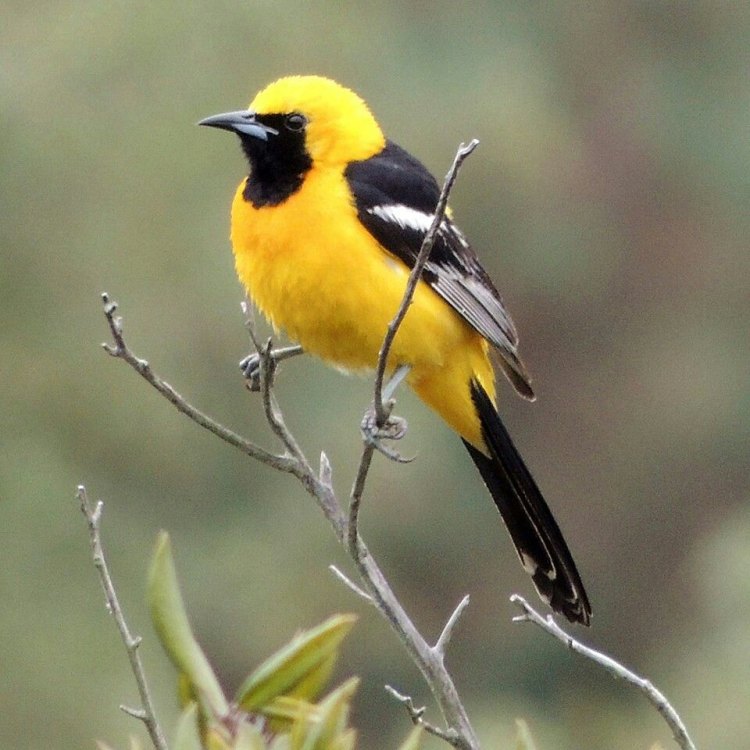
Hooded Oriole
- Adult Size: Small to medium-sized
- Average Lifespan: 5 to 7 years
- Reproduction: Sexual
- Reproductive Behavior: Monogamous
- Sound or Call: Musical, flute-like song
- Migration Pattern: Migratory
- Social Groups: Solitary or in small groups
- Behavior: Active and agile
- Threats: Habitat loss, nest predators, pesticides
- Conservation Status: Least Concern
- Impact on Ecosystem: Pollinators and seed dispersers
- Human Use: Not used by humans
- Distinctive Features: Bright yellow plumage, black bib and face mask
- Interesting Facts: Hooded Orioles construct beautiful hanging nests
- Predator: Birds of prey
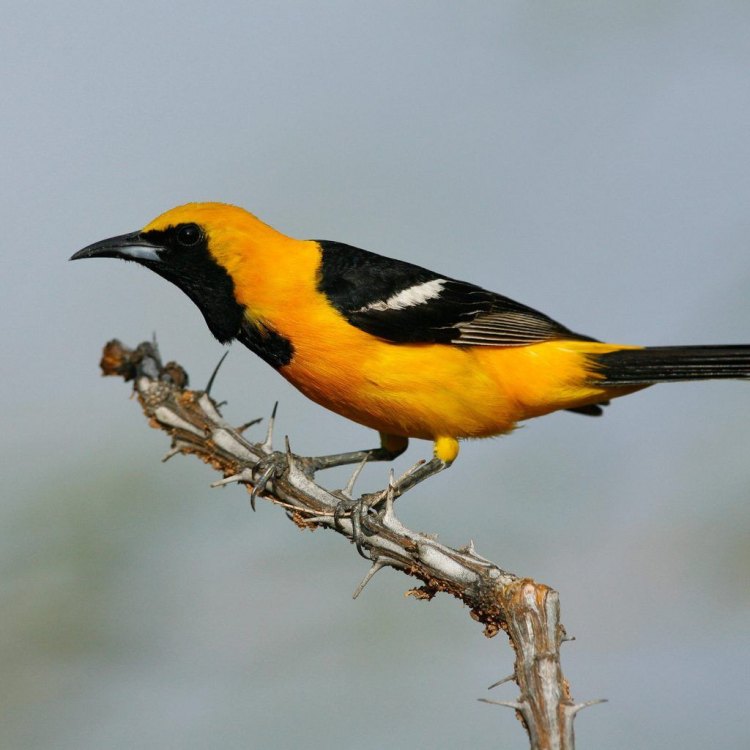
Icterus cucullatus
The Colorful and Charismatic Hooded Oriole: An Unsung Hero of the Ecosystem
The vibrant and lively Hooded Oriole (Icterus cucullatus) is a small to medium-sized bird native to western North America. Revered for its stunning bright yellow plumage and melodic song, the Hooded Oriole is a common sight in backyards, parks, and gardens. However, beyond its alluring appearance and musical abilities, this little bird plays a crucial role in the ecosystem.In this article, we will explore the unique features, behavior, and impact of the Hooded Oriole on the environment, shedding light on its often overlooked contributions to the natural world PeaceOfAnimals.Com.
Distinctive Features
The Hooded Oriole is easily recognizable by its striking yellow feathers, black bib, and face mask. These vibrant colors make it stand out against the green foliage, making it easy to spot. The male and female birds look similar, with the male having a slightly brighter yellow coloration.Interestingly, the Hooded Oriole belongs to the New World blackbird family, but unlike its black counterparts, it is not all black. Its bright plumage resembles that of tropical birds, adding an exotic flair to its appearance.
Reproduction and Mating Behavior
Hooded Orioles are sexual reproducers, meaning they require a male and a female to reproduce. They are monogamous birds, forming long-lasting partnerships and staying loyal to their mates.The breeding season for Hooded Orioles typically begins in late April and lasts until August. During this time, male birds perform an intricate courtship dance, which involves fluttering their wings and singing to attract potential mates Hokkaido. Once a female chooses a mate, they build a nest together in a matter of days.
Nesting and Habitat
One of the most interesting facts about the Hooded Oriole is its remarkable nesting ability. These birds construct hanging, pouch-like nests high up in trees using plant fibers, grass, and spiderwebs. The nests are intricately woven and can take up to two weeks to build.The nesting site is usually selected by the female, who prefers tall trees with thick foliage for protection from predators. Interestingly, Hooded Orioles often reuse old nests, adding new material to it each breeding season. These beautiful nests are not only functional but also aesthetically pleasing, making them a sight to behold.
Unfortunately, the Hooded Oriole's nesting habits make them vulnerable to habitat loss. Urban development and clear-cutting of forests have led to a decline in suitable nesting sites, putting these birds in danger.
Sounds and Communication
Hooded Orioles are known for their melodic and flute-like songs, which are a defining feature of their species. These songs are used to attract mates, defend territories, and communicate with other birds in their group.In addition to their songs, Hooded Orioles also make various clucks and chattering sounds to communicate different messages. They also have a distinctive call, resembling a wooden flute, which is often heard during their flight.
Migration Pattern
The Hooded Oriole is a migratory bird, spending its winters in Mexico and Central America to take advantage of the warmer climate and abundance of food. In the spring, they return to their breeding grounds in western North America, which includes California, Arizona, and parts of Nevada, Texas, and New Mexico.While these birds have a regular migration pattern, climate change is beginning to affect their timing. As temperatures rise, the Hooded Oriole's breeding season is starting earlier, potentially causing conflicts with other migratory bird species.
Social Behavior
Hooded Orioles are generally solitary birds, but they may form small groups during migration and in their wintering habitats. Interestingly, they are known to form mixed flocks with other bird species, such as warblers and tanagers, during their migration.Within their own species, male Hooded Orioles are territorial and can become aggressive to defend their chosen nesting site. However, outside of the breeding season, they are peaceful and may even share food sources with other birds.
Behavior and Conservation Status
Hooded Orioles are active and agile birds, often seen darting through the treetops and shrubs in search of food. They feed on insects, nectar, and fruits, making them valuable pollinators and seed dispersers in their ecosystems.Unfortunately, these birds face a variety of threats, including habitat loss, nest predators, and exposure to pesticides. Their reliance on specific tree species for nesting also makes them vulnerable to deforestation.
However, despite these threats, the Hooded Oriole is currently listed as "Least Concern" on the International Union for Conservation of Nature's Red List. This is due to its widespread distribution and relatively stable population.
Human Use
Unlike other bird species, the Hooded Oriole is not commonly used by humans for food, entertainment, or research. However, these birds can bring joy and entertainment to birdwatchers and backyard bird enthusiasts with their colorful appearance and beautiful songs.Impact on the Ecosystem
The Hooded Oriole's impact on the ecosystem goes beyond its alluring appearance and musical abilities. As pollinators, they help in plant reproduction by transferring pollen from flower to flower. This process is essential for the growth of fruits and seeds, making Hooded Orioles crucial contributors to the ecosystem's health.Moreover, their foraging behavior, where they consume harmful insects, helps regulate pest populations. In addition, Hooded Orioles also aid in seed dispersal, spreading seeds to new locations and supporting plant diversity.
Predators
Like all birds, Hooded Orioles are preyed upon by predators such as snakes, raccoons, and other mammals. However, their most significant threat comes from birds of prey, such as hawks, owls, and falcons. These predators often target Hooded Oriole nests, posing a significant danger to the young birds.In Conclusion
In conclusion, the Hooded Oriole may be a small and often overlooked bird, but its contributions to the ecosystem are invaluable. Its bright plumage, melodious songs, and remarkable nesting abilities make it a fascinating and charismatic species. More importantly, these birds play a crucial role in maintaining the balance of their ecosystems by pollinating, dispersing seeds, and controlling pest populations.As humans, it is our responsibility to protect and preserve the habitats of these beautiful birds and all other creatures. By taking care of the environment, we are ensuring the continued existence of the Hooded Oriole and its vital role in our ecosystem.
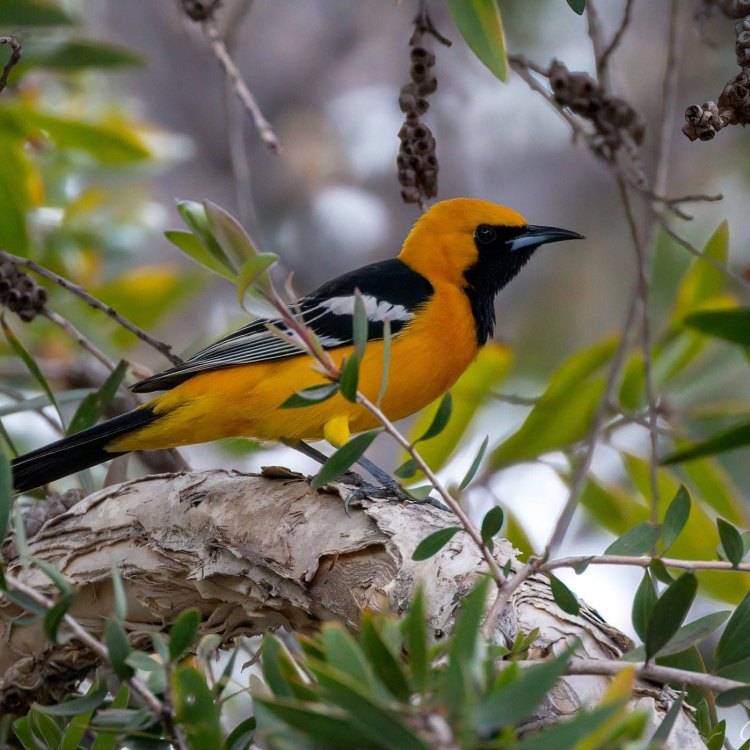
The Mesmerizing Hooded Oriole: A Vibrant Icon of Western North America
Disclaimer: The content provided is for informational purposes only. We cannot guarantee the accuracy of the information on this page 100%. All information provided here may change without prior notice.

